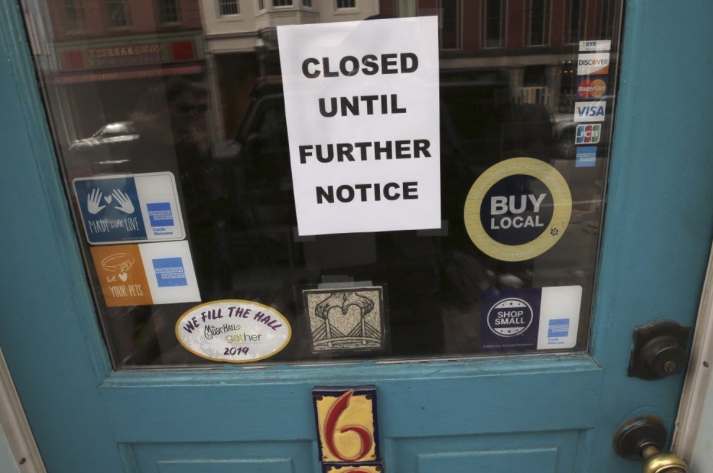
The $2.2 trillion federal rescue package could fail to deliver badly needed financial aid to thousands of smaller cities and counties where a majority of Americans live, according to documents and interviews with local officials.
The coronavirus outbreak has blown holes in the budgets of communities as the costs of battling it skyrocket and critical sources of revenue like sales and income taxes plummet.
The Coronavirus Relief Fund uses a formula based on population to parcel out tens of billions of dollars to the states while allowing cities and counties with more than 500,000 residents to apply directly to the Treasury Department for cash infusions. But localities below that population threshold are in limbo.
Among those affected: New Rochelle, New York, one of the cities hardest hit by the outbreak.
“I cannot understand the logic,” said Noam Bramson, the Democratic mayor of the city of about 80,000 people. “Cities with fewer than 500,000 people have been just as heavily impacted as those with more than 500,000 people. It strikes me as a completely arbitrary cutoff.”
The National League of Cities and the U.S. Conference of Mayors on Tuesday released a survey of more than 2,400 local officials that found 88% of them “anticipate the pandemic will lead to painful reductions in revenue this year” that will likely result in cuts to services, worker furloughs and layoffs. The groups said the outlook is ”particularly acute” for cities, towns and villages under the threshold.
The two advocacy groups and lawmakers have been urging Treasury Secretary Steven Mnuchin to ensure the relief fund money is fairly distributed. Guidelines for how the relief fund will operate are to be issued by the Treasury Department this week. The department created a web portal through which eligible parties could register to receive the money.
“Because of the lack of specificity in the legislation itself, it really is up for interpretation,” said Irma Esparza Diggs, director of federal advocacy for the National League of Cities. “Everybody’s just kind of holding their breath until Treasury comes out with their guidance.”
Of the nearly 3,100 counties in the United States, 130 have populations of more than 500,000, according to the National Association of Counties. There are 36 cities over the half-million mark, the National League of Cities told President Donald Trump in a letter last week. More than half the population lives in cities, towns and villages of fewer than 50,000 people, the letter noted.
Miami, Tampa, and Orlando, along with such cities as Kansas City, Missouri, are among the cities under the cutoff, according to the most recent Census Bureau figures available.
In fact, in Florida, only Jacksonville has the required 500,000 population, based on most recent U.S. Census Bureau numbers.
“Depending on who you believe, we’re either at 470,000 or 510,000,” said Miami’s Republican Mayor, Francis Suarez. “We’re projected to lose about $20 million a month while our economy has ground to a halt. The state of Florida is slated to get $8.3 billion, but we’re not sure if we’re going to get any of it.”
Every state will receive at least $1.25 billion in relief fund money. The state government gets the biggest share of the total — New York, for example, is projected to receive $7.5 billion, according to estimates prepared by the nonprofit Tax Foundation. The state gets $5.2 billion of that amount, and local governments with more than 500,000 residents are eligible for the rest in direct payments.
The Treasury Department guidelines may permit below-the-threshold counties and cities to appeal directly to the governor for a portion of the state’s allotment, according to Matt Chase, executive director of the National Association of Counties. But that may heighten the potential for behind-the-scenes lobbying campaigns to get part of the state’s share.
“Each local government would have to go hat in hand to the governor and say, ’Can we have part of your allocation?’” said Chase, who added, “We don’t need a lot of politics right now.”
The population threshold was included as a trade-off as lawmakers scrambled to put the relief package together, according to a letter 16 Republican senators sent to Mnuchin last week. Requiring the Treasury Department to process applications and calculate payments for every local government “would have created a bureaucratic morass that would have held up the distribution of these critical funds,” they said.
The senators expressed concern over Mnuchin’s comments during a recent briefing for lawmakers suggesting the department would interpret the law narrowly. They said they worried the department could “issue guidance that unintentionally creates obstacles to states supporting their front line.”
That’s at odds with Trump’s promises that the federal government would be there to backstop local and state officials, said Bryan K. Barnett, the Republican mayor of Rochester Hills, Michigan, and the president of the U.S. Conference of Mayors.
“The word from their lips to our ears is that this whole effort would be locally executed and federally supported,” Barnett said.
Sixteen states have no counties, cities or other municipalities with populations above 500,000, including Wyoming, Alaska and Montana. Without a mechanism for states to share coronavirus relief money, there’s no clear way to prevent them from keeping the entire pot to help make up their own budget shortfalls.
New York state has a deficit of more than $10 billion from fighting the coronavirus, and the $5.2 billion it’s to receive from the relief fund could help close that gap.
“The states will exert jurisdiction over that money, and the thousands of local governments who will have needs, it will be very difficult to get that money,” said Stephen Acquario, executive director of the New York State Association of Counties.
_____
Reprinted with permission from The Associated Press.


